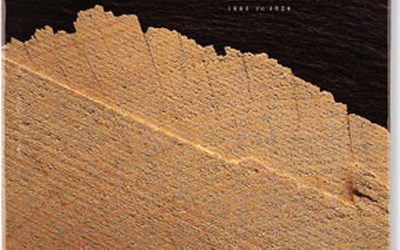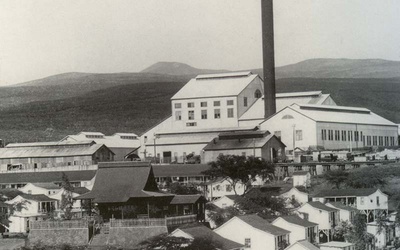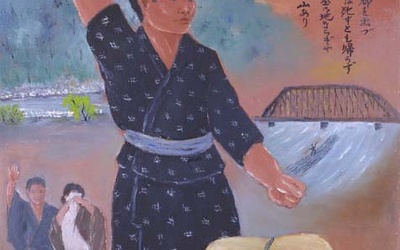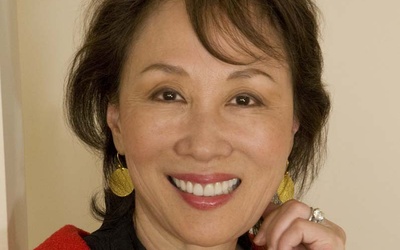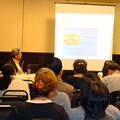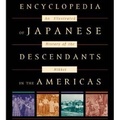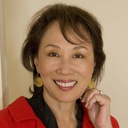
アケミ・キクムラ・ヤノ
(Akemi Kikumura Yano)
アケミ・キクムラ・ヤノは、カリフォルニア大学ロサンゼルス校アジア系アメリカ人研究センターの客員研究員です。カリフォルニア大学ロサンゼルス校で人類学の博士号を取得しており、受賞歴のある作家、キュレーター、劇作家でもあります。著書『過酷な冬を乗り越えて:移民女性の人生』で最もよく知られています。
2012年2月更新
この執筆者によるストーリー
一世の開拓者たち -ハワイとアメリカ本土における日本人移民の歴史 1885~1924- その5
2011年1月31日 • アケミ・キクムラ・ヤノ
>>その41909年日本人大ストライキアメリカ労働省長官は、1900年にハワイで起こった22件のストライキのうち、20件に日本人労働者が関与していたと報告している。その4年後、彼らはさらに強い組織力と団結力を発揮して、ワイパフのオアフ砂糖会社耕地において、約1,600人がストライキを行なった。1909年には、それをもはるかに上回る規模、組織力、期間の空前の日本人大ストライキが発生した。このストライキは、オアフ島内の主だった5つの耕地で、7,000人に上る労働者が、一世実業家…
一世の開拓者たち -ハワイとアメリカ本土における日本人移民の歴史 1885~1924- その4
2011年1月24日 • アケミ・キクムラ・ヤノ
>>その3「おい、沖縄」ほとんどの耕地では、労働者たちは出身国別に異なるキャンプに住んでいた。 異人種の食事、服装、言葉などは相互に取り入れていたものの、人種を超えた付き合いは無かった。また同じ人種の中でも、ある程度の区別が出身地方の違いによって存在していたようである。 日本人では、「内地(北海道、本州、四国、九州出身者)」と「ウチナンチュウ(沖縄出身者)」の社会的距離が大きかった。日本列島から遠く離れていた沖縄には、独特の方言、音楽、舞踊、武術、料理などが発達していたの…
一世の開拓者たち -ハワイとアメリカ本土における日本人移民の歴史 1885~1924- その3
2011年1月17日 • アケミ・キクムラ・ヤノ
>>その22.耕地生活と労働19世紀中、最後に導入された労働移民であった日本人は、ハワイの耕地システムの最下層に編入された。1892年には、日本人は全労働力の65%を占めたが、賃金、住居ともに最低のものだった。熟練を要する仕事や監督者(ルナ)の仕事は、ほとんど全て白人に割り当てられた。1ハワイで日本語新聞を発行していた相賀安太郎は、白人耕地経営者と日本人労働者の格差が、徳川時代の大名と農民のそれより大きいことを指摘した。彼は、それがかつてのアメリカ黒人奴隷と白人の関係に似て…
一世の開拓者たち -ハワイとアメリカ本土における日本人移民の歴史 1885~1924- その2
2011年1月10日 • アケミ・キクムラ・ヤノ
>>その1日本の状況日本人移民たちは故郷を離れた寂しさと過酷な労働に苦しんでいたが、給料日がくると母国を離れた理由を思い出し自分を励ましていた。「3年で400円」という目的があったのだ。当時、日本で同じ額を貯めるには、日雇い労働者は7年、製糸工場労働者は10年もかかったのである。ハワイにおける耕地労働者の1ヶ月の賃金が17.65円であったのに対して、1884年における広島県農民の年間所得は14.48円、1885年はわずか9.98円であった。1 明治政府は急速な近代化に必要…
一世の開拓者たち -ハワイとアメリカ本土における日本人移民の歴史 1885~1924- その1
2011年1月3日 • アケミ・キクムラ・ヤノ
1. ハワイへの旅1885年2月8日、日曜日。夜明けとともにハワイ行き汽船シティ・オブ・トキオ号の乗船客たちの気持ちは高ぶっていた。遂に陸地が見えたのである。坂チカとその夫庄七は、二人の息子エイゾウとヨシタロウを起こした。坂一家がデッキに上がると、ホノルル港を取り囲む青々とした山々が次第に水平線上に浮かび上がってくるのが見えた。 この船の疲れ果てた旅人たちが日本を出発したのは、ほぼ2週間前のことだった。坂庄七と妻のチカは、横浜でハワイの砂糖きび耕地で3年間働く労働契約書に…
Mukashi Banashi - Part 4
2010年12月9日 • アケミ・キクムラ・ヤノ
Read Part 3 >>Today, there are approximately 100 Japanese American families living in the Fowler vicinity. Only three families continue to farm as their main economic source. Approximately 90 percent of these families belong to the Buddhist Church where church-related activities seem to be the recognized unifying force in the community. However, many residents have voiced their concerns over the community’s future since increased education, lack of job opportunities, changing cultural values, interracial marriages, and greater social acceptance by the …
Mukashi Banashi - Part 3
2010年12月2日 • アケミ・キクムラ・ヤノ
Rear Part 2 >>The children cradled the hopes of the Japanese community, for as American-born citizens, they would be entitled to the rights that the Issei were denied. But, as social and economic barriers continued to plague the community, the future of the second generation did not appear very promising. In 1913, the state had passed the first Alien Land Law, aimed particularly at the Japanese, forbidding them to own land and limiting leases to a period of three years. …
Mukashi Banashi - Part 2
2010年11月25日 • アケミ・キクムラ・ヤノ
Read Part 1 >>>When the women finally arrived in Fowler, they found a thriving Japanese community dominated by the interests of a predominantly male population. Like many towns in the county, Fowler’s Japanese community was situated on “the other side of the tracks” along with the Chinese who had settled there before them, and who, in the 1870s numbered five hundred, the largest immigrant group in Fresno County. Racial antagonism had compelled the Japanese and Chinese, as well as other …
Mukashi Banashi - Part 1
2010年11月18日 • アケミ・キクムラ・ヤノ
In the summer of 1981, I drove through the Tehachapi Pass from Los Angeles and descended onto the flat, dry floor of the San Joaquin Valley, one of the largest valleys in the world and once the bed of a vast inland sea, stretching approximately 250 miles long and 40 to 65 miles wide, extending from Sacramento in the north to Kern County on the south, and bounded by Mount Diablo Spur on the west and Sierra Nevadas on the …
Contemporary Issues Facing Japanese American Communities
2008年2月14日 • アケミ・キクムラ・ヤノ
Today, a number of challenges face the Japanese American communities in the United States. At the core of these challenges is the fact that Japanese American communities have become increasingly complex, dispersed and diverse. No longer can we neatly define the Japanese American community by generations – Issei, Nisei, Sansei -- who share common beliefs and historical experiences. Previous definitions of what constitutes a “Japanese American” now seem totally inadequate as one-out-of-three Japanese American is of mixed ethnic or racial …

